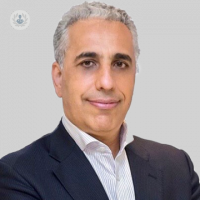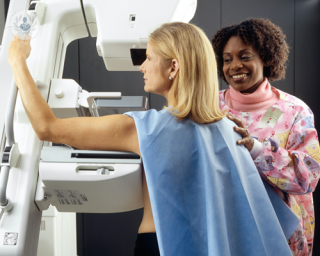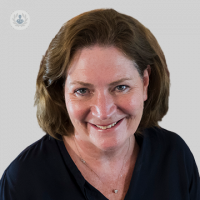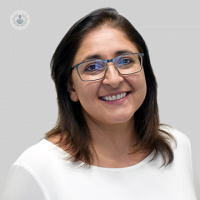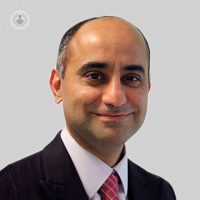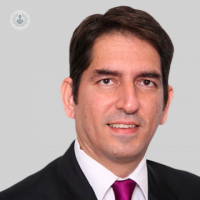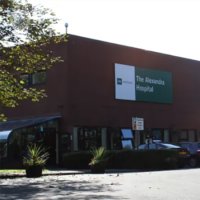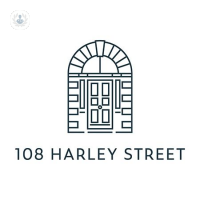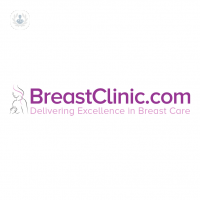Breast pain
Professor Kefah Mokbel - Surgery
Created on: 08-14-2019
Updated on: 10-17-2023
Edited by: Conor Dunworth
What is breast pain?
Breast pain, also known as mastalgia, is pain or tenderness around the breast area. It’s a common complaint among women and can appear as a dull, heavy andaching pain or a sharp burning pain. It can range from mild to severe and the duration varies. Pain may appear:
- Just before your period - two to three days before you may experience some form of mild to moderate pain in both breasts.
- During your menstrual cycle - the pain can be present for around a week or longer each month. The pain might be mild to moderate.
- During the whole month - this is usually not related to your menstrual cycle if it lasts the whole month.

Any breast pain that is persistent needs to be checked over by a doctor. It is normal for women to experience breast pain before and during both periods and menopause. Breast pain is not usually a symptom of breast cancer.
What are the symptoms?
Pain in the breast can be classified as either clinical or nonclinical.
Clinical pain means the pain is linked to your menstrual cycle. It usually appears two weeks before and subsides during or after the menstrual cycle is over. The pain can appear as dull, heavy and aching, affecting both breasts. Sometimes there is breast swelling and it can radiate around the armpit area.
Nonclinical pain is when the pain is unrelated to the menstrual cycle and is instead linked to an injury to the breast tissue or surrounding areas. This usually affects only one breast at a time. It can be a constant, sharp or burning pain and most likely to affect women after the menopause.
Extramammary breast pain is where the pain can feel like it is coming from the breast but in reality, it’s radiating from a different place close by. If you strain your chest muscles then the pain can feel like it is coming from your breast. It is treated using anti-inflammatory medication and rest.
What causes breast pain?
There are many reasons why a woman might experience pain in their breasts. The following list explains some of the various causes.
- Breast size – when a women has large breast this can put strain on the muscles around the chest, neck and shoulders. This would be identified as nonclinical breast pain.
- Hormone fluctuations – a change in the levels of oestrogen and progesterone during a menstrual cycle can cause the breasts to swell and feel lumpy and tender. These are likely when a women experiences puberty, pregnancy or menopause.
- Mastitis – This is an infection of the milk ducts. During breastfeeding, the nipple area sometimes becomes sensitive and the skin can break, allowing infections to occur. Doctors normally treat this with antibiotics.
- Diet – women that have a diet that is high in fat and refined carbs, may be more likely to experience breast pain.
- Breast cysts – as a women gets older, her breasts may replace tissue with fat. When this happens, cysts can occur known as fibrocystic breast tissue. They aren’t serious but they can sometimes cause discomfort.
- Trauma – surgery on the breast can cause pain around the scar tissue. Injuries to the breast can also cause pain.
- Medications – some medications such as anti-depressants, antibiotics and hormone therapy can cause breast pain.
Medical tests & diagnosis
If the pain is constant, localised or is getting worse then a visit to the doctor is necessary. If your doctor feels like it needs to be checked further, they may offer various tests. A clinical breast exam is often performed where the doctor will check for any changes in the breast, listen to your heart and lungs and check for any muscular pain around the area.
If there is a focused area of pain and a lump or swelling present, then you may need to have a mammogram and/or an ultrasound to evaluate the cause. Sometimes, the doctor might need to perform a biopsy if the images from the mammogram and ultrasound aren’t clear. During this process, the doctor will take a very small sample of breast tissue and send it to a lab for testing.
Treatment
Treatment for breast pain varies depending on what’s causing the pain. Sometimes the pain can resolve on its own, other times you may need some treatment.
Changing your diet and eating less fatty foods can help if the pain is related to your diet. Sometimes, reducing caffeine and taking vitamin E can help too. If medication is needed, a doctor might prescribe some hormone supplements or hormone blockers to correct any hormonal imbalance. Anti-inflammatory pills and painkillers can be used to ease the discomfort.
Each treatment depends on the individual case, so you must consult a doctor to find the correct treatment for you.
